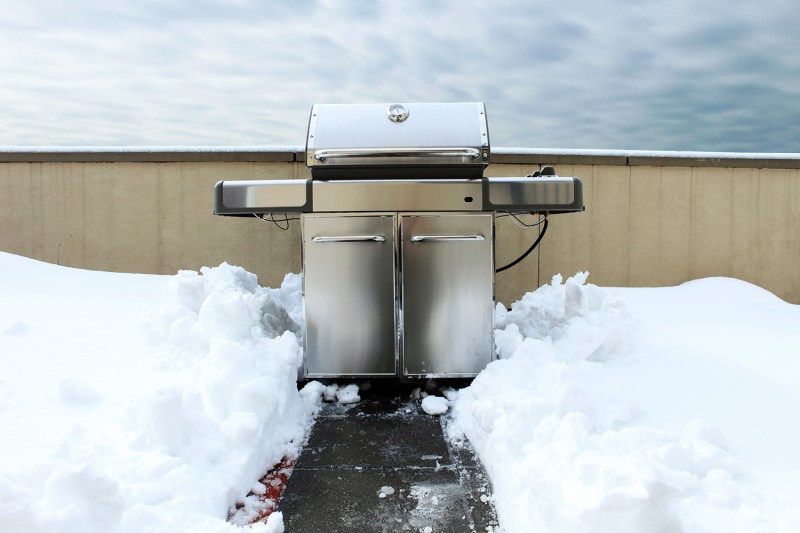If the culinary world has taught us anything, it’s that rules are meant to be broken. A daring mindset has gifted us everything from fusion cuisines to unique wines. Keep that in mind next time somebody tells you grilling is just for the summer months.
Granted, cooking outdoors is easier when the weather is better. But that’s no excuse to abandon creating some of your favorite grilled dishes come winter. No risk, no reward. There’s never a bad time for smoking meat, assembling beer can chicken, or throwing some vegetables on an open flame. In fact, in the winter, when we’re craving some big time protein and heartier dishes, we may crave grilled foods even more.
To find out what we need to do when it comes to winter grilling, we spoke with the experts at Char-Broil.
We asked Clark Turner, director of gas grills for Char-Broil, for his tips and tricks for grilling in the winter. “While some people are prepping their grills for storage during the colder months, many people enjoy grilling year-round, including people in those areas facing colder temperatures and snow,” he says. “Whether you prefer gas grills or charcoal, the fun times and flavors found with grilling don’t have to end after summer; it just takes a little bit of a different approach and preparation.”
With that in mind, here are his essential tips and tricks to remember next time you want to fire up the grill when the temperatures dip.
10 Tips for Grilling in Cold Weather

- Clear the way: Make sure you’ve created a safe walkway to and from your grilling area. There’s nothing worse than grilling a big, juicy steak and then slipping and dropping it in the snow.
- Up your fuel levels: Both gas and charcoal grills have to work a little harder to maintain heat in cold weather. If you’re using gas, have a spare tank of propane handy. With charcoal, use a good quality charcoal with low moisture levels.
- Check your parts: Always check hoses for cracks when using a gas grill.
- Keep away from wind: Wind can force your grill to work much harder to keep a steady temperature. Try to place your grill in an area that is shielded from wind during the winter.
- Plan ahead: You don’t want to waste time searching for the things you need during the cold so make sure you have everything — from brushes to sauces — organized ahead of time.
- Light it up: It gets dark much earlier in the winter. Invest in a grill light, outdoor patio lantern, or another light source. If nothing else, get yourself a good headlamp.
- Make it simple: Standing out in the cold for too long is no fun. We suggest recipes that call for minimal flipping.
- Manage your time: Grills can take longer to warm up, and food generally takes more time to cook in the winter. Allow for some extra time for dinner.
- Keep the lid closed: As much as you want to check on that delicious meal you’re grilling, keep the lid closed to prevent additional heat loss.
- Clean up fast: Frozen fat is harder to clean off the grill. Keep a warm bowl of wet cloths handy for clean up as soon as you’re done cooking. And clean often. Dealing with mold on grill grates is no fun so consider washing and drying them before any extended period of non-grill use.
If none of this sounds in the least bit fun and you insist on packing up your grill for the winter, then check out our tips on how to clean and store it.
Article originally published February 20, 2017. Last updated in December 2022.



